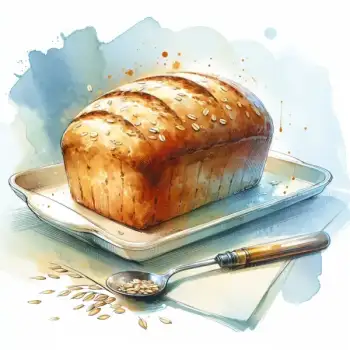


Loaf
Oat bread typically comes in the form of a loaf, which can be sliced according to preference for sandwiches or toast.
Organic
Organic oat bread is made from oats that have been grown without synthetic pesticides or fertilizers, appealing to health-conscious consumers.
Pre-sliced
For convenience, oat bread is often available pre-sliced, making it ready to use for quick meals and snacks.
Gluten-free
Some oat breads are specifically formulated to be gluten-free, catering to those with gluten sensitivities or celiac disease.




Loaf: Dave's Killer Bread
Organic: Alvarado Street Bakery
Pre-sliced: Nature's Own
Gluten-free: Udi's Gluten Free

Baking: Oat bread is typically baked at a moderate temperature, around 350°F to 375°F (175°C to 190°C), to allow for even cooking and a well-browned crust. It's done when it sounds hollow when tapped on the bottom.
Kneading: Developing gluten through kneading is crucial for a good loaf of oat bread. The process, which can be done by hand or with a mixer, should result in a smooth and elastic dough.
Proofing: This is a critical step for yeast-leavened oat bread. Proofing allows the dough to rise and develop flavor. It requires a warm, draft-free environment and can vary in time, depending on the recipe and conditions.



